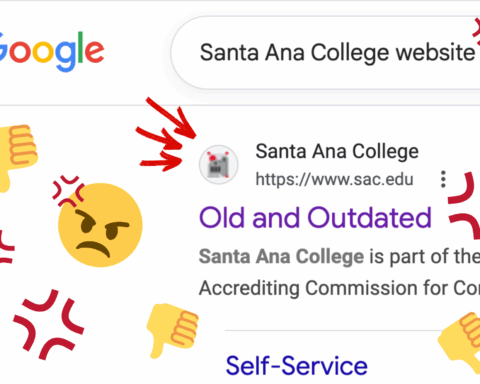California’s community colleges are set to endure potentially drastic changes in the future:
Community colleges are known for offering broad and affordable opportunities to millions of Californians, but a shift in priorities will bring changes to the system.
According to the California Community Colleges Chancellor’s Office, 76,309 people attended Santa Ana College during the 2010-2011 school year and 3,172 students graduated or received a certificate.
California’s community colleges enroll about 2.6 million students at 112 colleges. Less than 54 percent of students complete a degree or certificate. Written by Sen. Carol Liu, Senate Bill 1143 mandated that the Board of Governors of the California Community Colleges “adopt a plan for promoting and improving student success” by March 1 of this year.
Passed in 2010, SB1143 is designed to combat “the low rate of degree completion among community college students…threatening California’s economic future,” according to the Chancellor’s Office.
After about a year of work, a 20-member task force presented its recommendations, adopted in January by the Board.
“There were many ideas discussed,” said Dr. David Morse, a Long Beach City College professor and a member of the Task Force. “One item I brought up for discussion was to hire more full-time teachers to help with basic skills. It was quickly discarded.”
Twenty-two recommendations were approved and sent to the Board in December 2011 and were ratified in January. The recommendations are now at the state Legislature for review. “Implementations are pending due to educational codes being amended.” Morse said.
Among the recommendations, one would require students to select a field of study and create an education plan by the end of their third term. If a student does not do this, they will lose priority for registration and may find it more difficult to enroll in classes.
“The proposed policies will give priority to students seeking courses that address the core mission of our colleges: career technical education, completing lower division transfer requirements, and basic skills and English as a second language. These students will also be expected to take a diagnostic assessment, participate in orientation, and develop an education plan,” said Peter Mac Dougall chair of the California Community Colleges Student Success Task Force and a member of the California Community Colleges Board of Governors.
A stricter set of guidelines for attaining a BOG Fee Waiver was also among the recommendations presented.
“That already happens at the federal level with the Pell Grant and the federal loans. California, with the BOG has just been a lot freer and liberal with that and it’s not as much money either,” said Robert Manson, Associate Dean of Financial Aid at SAC. “With the economy the way it is, I think they are having second thoughts about that. They probably would be using the federal model as an example.”
“Right now the federal government…allows for an appeal process where students can come see us in financial aid and explain their circumstances and why they are not able to keep their 2.0 GPA,” Manson added, “so there is that leeway to make exceptions and we are able to help a lot of students.”
- In Photos: Fiestas Patrias 2025 - September 25, 2025
- The two-party system is failing us. - October 19, 2024
- Read our Fall 2023 Print: Vol. 100 No. 1 - October 23, 2023











